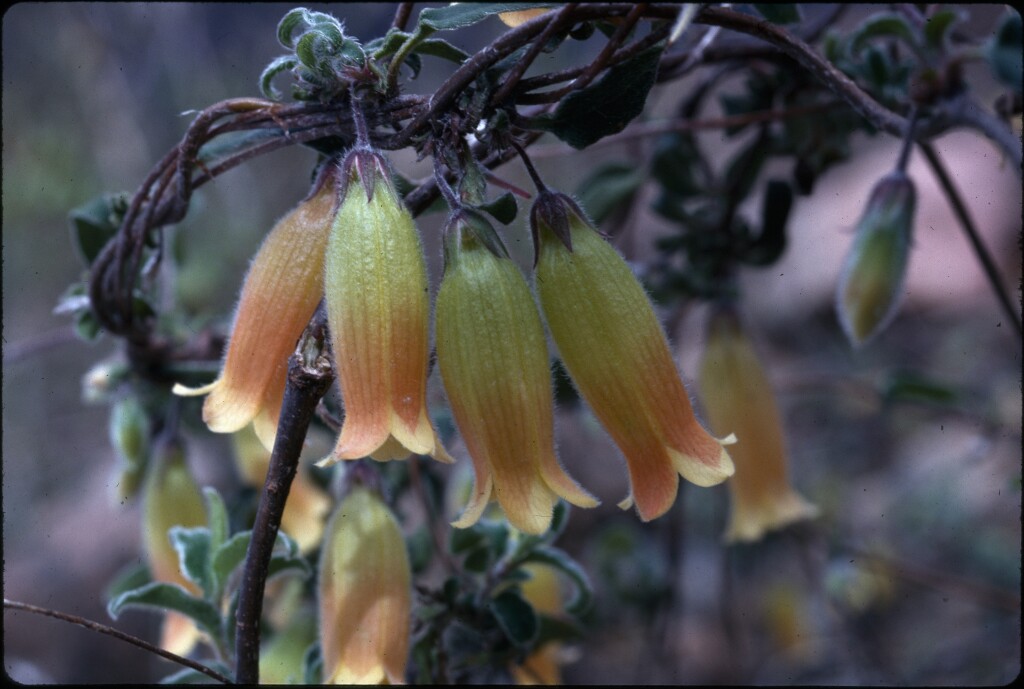Marianthus bignoniaceus
F.Muell.Twiner with reddish-brown, finally glabrous stems. Leaves shortly petiolate, ovate or narrowly ovate, 12–50 mm long, 6–25 mm wide, variably pubescent, bases truncate or shallowly cordate. Flowers solitary or paired (rarely in 3s) in upper axils, pendent; sepals lanceolate, 4–5 mm long, hispid to villous; corolla pubescent, narrowly campanulate, 15–22 mm long, with obtuse, slightly spreading lobes 3–5 mm long, yellow near base, orange or salmon-pink above, splitting from base with age; stamens and style reaching to c. throat of tube. Capsule pubescent, narrowly obovoid 13–18 mm long, the 2 valves prominently veined on the inner face; style persistent; seeds cuboid, c. 1 mm long, densely papillate. Flowers mainly Sep.–Jan.
Wim, VVP, CVU, GGr, DunT. Also SA. Locally common in damp open-forest and dense scrub along streams or in elevated sites amongst rock in the Grampians and Black Range. The localities of old records from nearby areas are dubious.
Walsh, N.G.; Albrecht, D.E. (1996). Pittosporaceae. In: Walsh, N.G.; Entwisle, T.J., Flora of Victoria Vol. 3, Dicotyledons Winteraceae to Myrtaceae, pp. 526–539. Inkata Press, Melbourne.
 Spinning
Spinning

